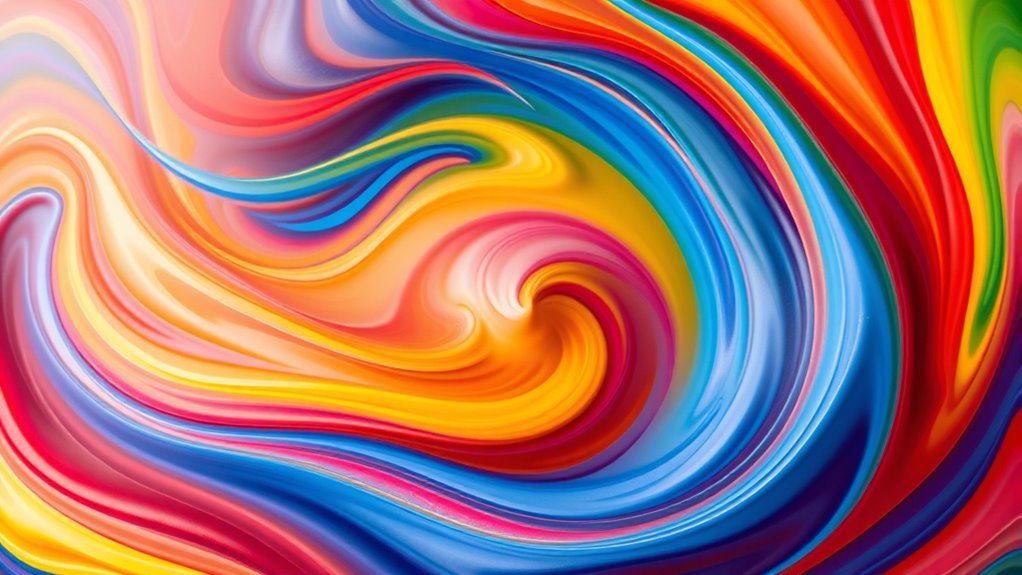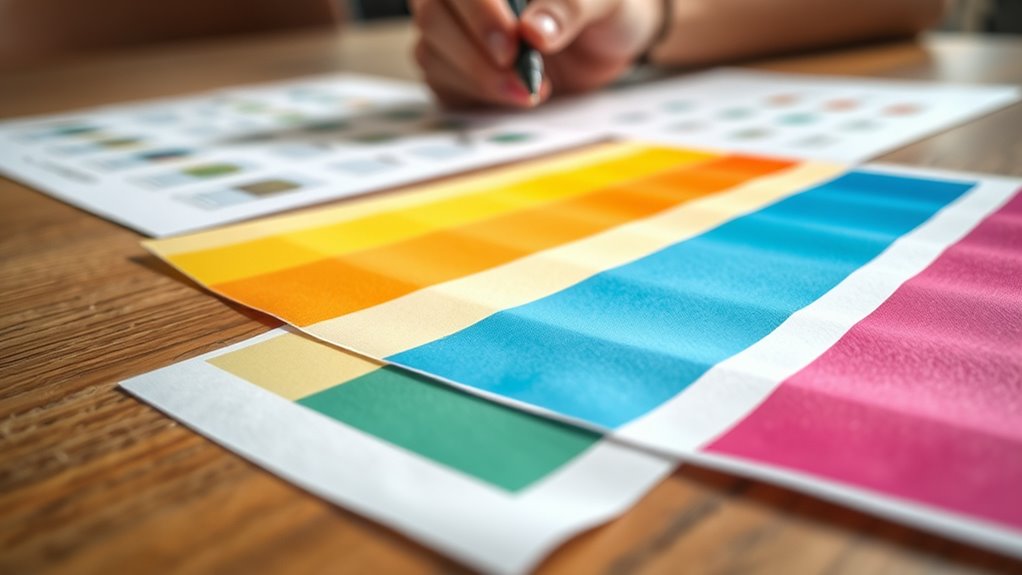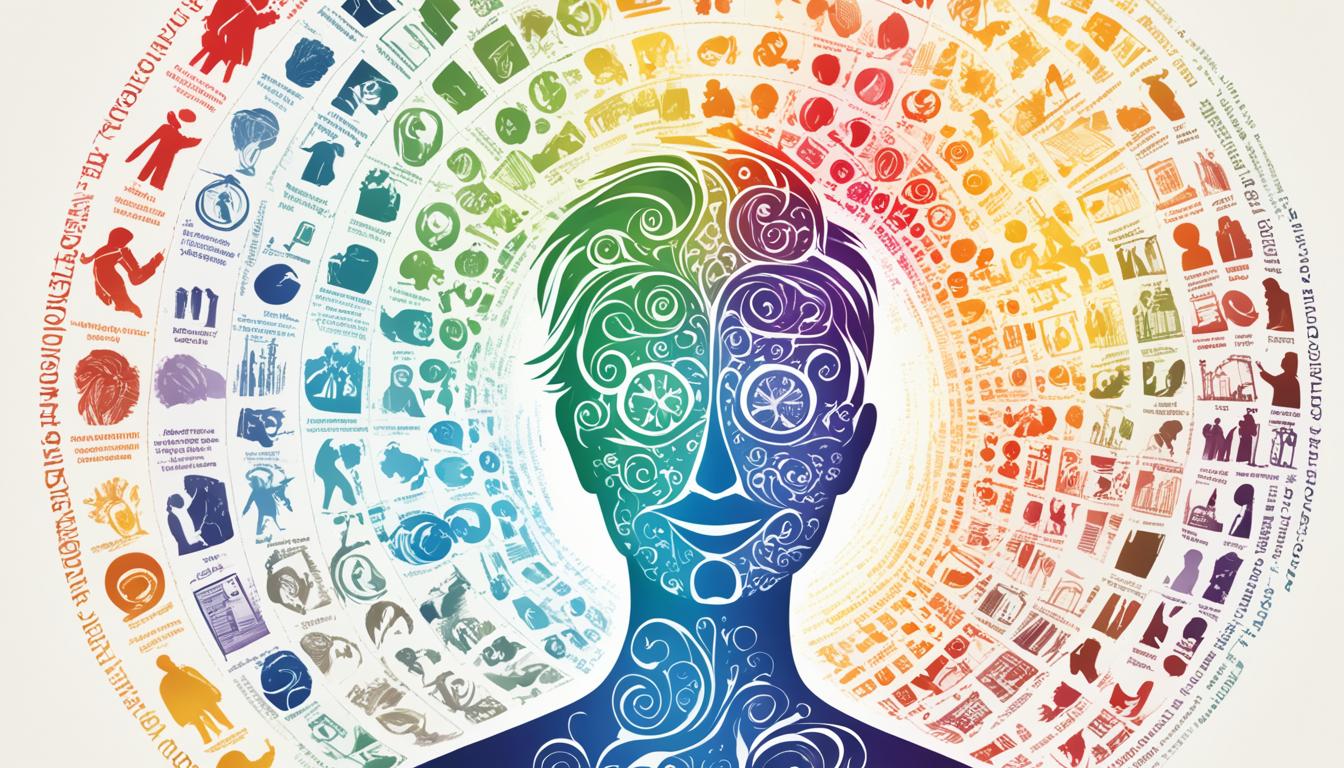The color personality test works by asking you to choose colors that appeal to you, which reveals parts of your subconscious mind. Your preferences reflect your emotional state, personality traits, and tendencies based on color psychology. Bright, bold colors might show confidence, while softer shades reveal sensitivity. These choices serve as clues about who you are beneath the surface. If you keep exploring, you’ll discover even more about what your color choices say about you.
Key Takeaways
- The test involves selecting colors that resonate most with you, reflecting subconscious preferences linked to personality traits.
- Color choices are analyzed based on color psychology principles, where each color symbolizes specific emotional or psychological qualities.
- Your selections reveal insights into your emotions, motivations, and potential areas for personal growth.
- The process is quick and intuitive, relying on subconscious responses rather than deliberate analysis.
- Interpretation of your choices helps build a personality profile, promoting self-awareness and understanding of hidden traits.

Have you ever wondered how a simple choice of color can reveal your personality traits? The idea might seem surprising at first, but that’s exactly what the color personality test aims to do. This fascinating approach relies on the principles of color psychology to analyze your preferences and interpret what they say about you. By selecting colors that resonate most with you, the test functions as a form of personality assessment, providing insights into your character, emotions, and tendencies.
Color psychology plays a crucial role here, as it studies how different colors evoke specific feelings and behaviors. For example, you might be drawn to bold reds, which often symbolize passion and energy, or prefer calming blues that suggest tranquility and reliability. When you take a color personality test, your choices serve as clues to your inner world. The process is straightforward—you’re presented with various colors or combinations, and you pick the ones that appeal most to you. Your selections aren’t random; they are reflections of your subconscious preferences, shaped by your experiences and personality traits.
Colors evoke feelings and reveal subconscious preferences, offering insights into your personality traits and emotional state.
The test then analyzes your choices to build a profile of your personality. It doesn’t just identify superficial likes or dislikes but explores deeper into your emotional state, motivations, and even your potential areas for growth. For instance, someone who favors yellow may be optimistic and cheerful, while a person who gravitates toward black might be drawn to mystery or independence. The beauty of this personality assessment lies in its simplicity and accessibility. You don’t need to answer a long questionnaire or undergo a complex evaluation—your color choices do the heavy lifting.
As you go through the test, it becomes clear how colors can serve as powerful symbols. They communicate more than just aesthetics; they reveal underlying psychological traits. The process encourages self-reflection because it prompts you to think about why certain colors attract you and what that says about your personality. Additionally, understanding the types of cookies used during the test can enhance your experience by ensuring your privacy is protected while you explore your inner self. Over time, many find these insights surprisingly accurate, helping them understand themselves better or even guiding personal development.
In essence, the color personality test harnesses the connection between color psychology and personality assessment to reveal hidden facets of who you are. It’s a quick, engaging way to explore your inner self, using the colors you naturally gravitate toward as a mirror of your personality. So next time you pick a favorite hue, remember—your choice might be telling you more than you realize.
Frequently Asked Questions
How Accurate Is the Color Personality Test?
The accuracy of the color personality test varies because it depends on its psychological validity and cultural influence. While it can reveal interesting insights about your traits, it’s not a definitive measure of personality. Cultural backgrounds may affect how you interpret colors, so results might differ across groups. Use it as a fun tool for self-reflection, but don’t rely solely on it for understanding your true personality.
Can the Test Change Over Time?
Imagine you took the test last year and now find your answers slightly different. Yes, the test can change over time because your personality stability and color perception evolve with experiences. Life shifts, new habits, and reflections influence your responses, making your personality dynamic rather than fixed. So, your results may vary as you grow and develop, reflecting your current state more accurately than before.
Is the Test Suitable for All Age Groups?
Yes, the color personality test is suitable for all age groups. You can include children for child participation, making it engaging and educational. Seniors also find it helpful, as it’s simple and non-intimidating. The test adapts well to different maturity levels, ensuring everyone can participate comfortably. This versatility makes it a great tool for understanding personalities across generations, fostering better communication and self-awareness for everyone involved.
Are There Scientific Studies Backing the Test?
You might find it interesting that there’s limited scientific research evidence supporting the color personality test’s psychological validity. While some studies suggest it’s engaging and fun, it doesn’t have the rigorous research backing that other psychological assessments do. Coincidentally, many experts view it more as a playful tool rather than a scientifically validated method for understanding personality traits, so don’t rely solely on it for serious insights.
How Should I Interpret Mixed Color Results?
When you get mixed results, focus on your unique color interpretation. Recognize that mixed results highlight your diverse traits and preferences, so don’t see them as conflicting. Instead, consider how each color reflects different aspects of your personality. Embrace the complexity, and use this insight to better understand yourself. Remember, mixed results offer a richer, more nuanced view, helping you grow and adapt in various situations.
Conclusion
By understanding what each color reveals about your personality, you gain insight, you gain self-awareness, and you gain clarity. The color personality test helps you see your strengths, recognize your tendencies, and embrace your uniqueness. It’s a tool to explore your mind, a mirror to reflect your emotions, and a guide to improve your relationships. Embrace the colors, understand the meanings, and discover the vibrant, authentic you waiting to be uncovered.
Felicity, our Author, pens in-depth articles and guides that delve into the heart of personal discovery. Her narrative-driven approach weaves together theory, practice, and personal anecdotes, making the journey of self-exploration both relatable and inspiring. Felicity’s contributions help illuminate the path for those seeking a deeper understanding of themselves and their relationships.









